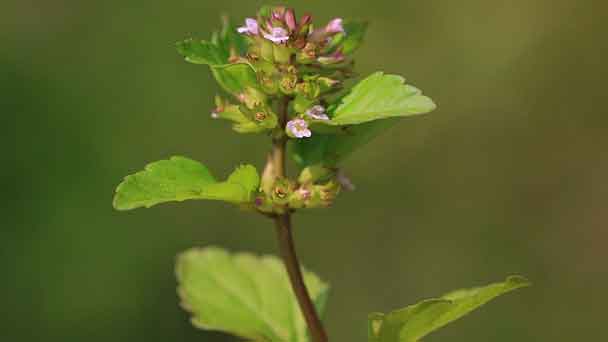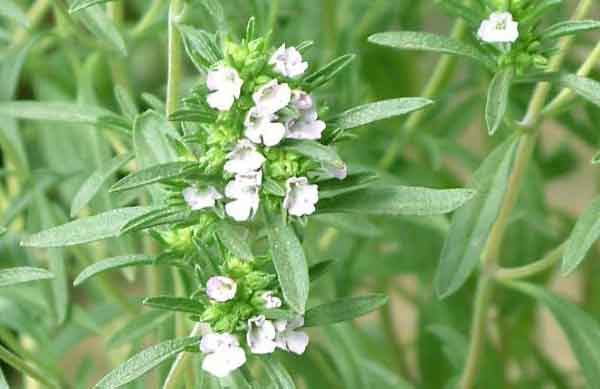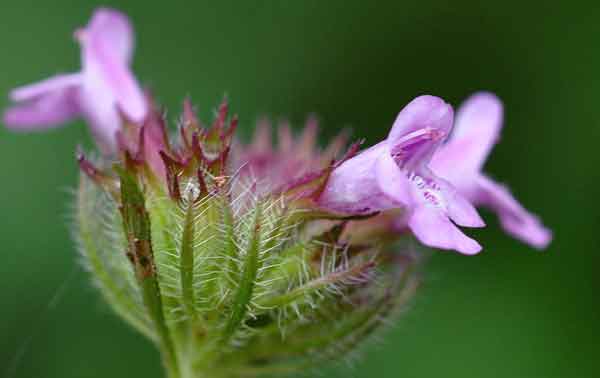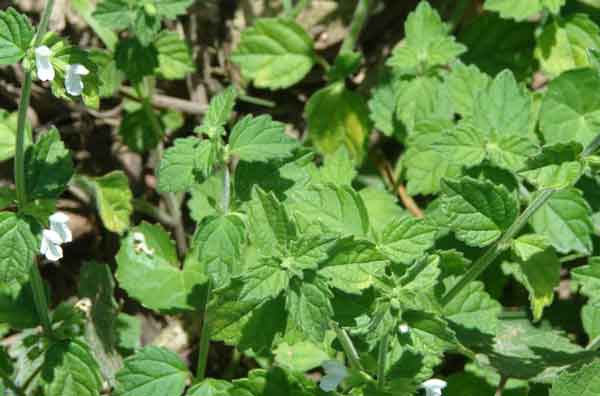Summer Savory (Satureja hortensis) Profile
Written by Iris
Oct 14 2021

Summer Savory (Satureja hortensis) is an annual herb found throughout the Northern Hemisphere. Summer Savory (Satureja hortensis) is mainly used as a cooking herb. Summer Savory (Satureja hortensis) is especially popular in Canada in summer, where Summer Savory is used in place of sage. Elsewhere, Summer Savory is a versatile seasoning used in stews, sausages, fillings, and marinades. Summer Savory can be used with any kind of meat; Beef, chicken, pork or seafood. Summer Savory is also used in Herbes de Provence mixtures.

The two Savorys were among the strongest cooking herbs available to Europeans until world exploration and trade brought them tropical spices like black pepper. Both Savorys were noticed by Virgil as being among the most fragrant of herbs, and on this account recommended to be grown near bee-hives.
In Shakespeare's time, Savory was a familiar herb, we find it mentioned, together with the mints, marjoram and lavender, in The Winter's Tale.

Savory's uses aren't limited to the kitchen, however. Since the days of the ancient Egyptians—who stirred the powdered herb into their love potions—Summer Savory has been praised as a remedy for sore throats, dim vision, sciatica, palsy, intestinal disorders of various kinds, and the stings of wasps and bees.
There are several species of savory, with slightly different growing habits. Although summer savory has the most delicate flavor and is preferred for culinary use, all have the same general uses in the herb-conscious household.
Leafhoppers
These little insects are everywhere and it's often a matter of control rather than avoiding them. Try to identify leafhoppers early because they suck the sap from Summer Savory, leaving them yellow and stunted. I use diatomaceous earth or insecticidal soap to kill them off.
Spider Mites
Spider mites live in clusters on the undersides of growing savory leaves. They suck Summer Savory's fluids and can wreak havoc on your garden. Cut any leaves that are infested and throw in the garbage. I've found the best way to get rid of them is to use organic pyrethrum to kill the adults and then keep them away using neem oil.
Aphids
These little bugs can destroy a plant if you let their population grown. They literally suck the life from your plant. My favorite method to control them is neem oil applied three times with three weeks in between each application. Sometimes Summer Savory takes a while, so be vigilant and check for aphids throughout the season.
Leaf Roller Caterpillar
Leaf roller caterpillars will roll leaves up and feed on the inner surface. They eat through the leaf as they mature. I use a good organic insecticide and if I see one on a leaf, I pull the it off and throw it in the garbage.
Summer Savory (Satureja hortensis) PictureSummer Savory (Satureja hortensis) InfoSummer Savory (Satureja hortensis) HistorySummer Savory (Satureja hortensis) HabitsSummer Savory (Satureja hortensis) DistributionHow to Grow and Care for Summer Savory (Satureja hortensis)How to Grow Summer SavoryHow to Care for Summer SavoryUses of Summer Savory (Satureja hortensis)Summer Savory (Satureja hortensis) Common Pests/DiseasesSummer Savory (Satureja hortensis) Companion Plants
Summer Savory (Satureja hortensis) Picture

Summer Savory (Satureja hortensis) Info
| Botanical Name | Satureja hortensis |
| Common Name | Summer savory |
| Plant Type | Annual herb |
| Mature Size | 12-24 in. tall |
| Sun Exposure | Full sun |
| Soil Type | Loamy |
| Soil pH | 6.6-7.5 |
| Bloom Time | Summer |
Summer Savory (Satureja hortensis) History
Savory species are native to the Mediterranean region and have been used to enhance the flavour of food for over 2,000 years. During Caesar’s reign, Summer Savory is believed that the Romans introduced savory to England, where Summer Savory quickly became popular both as a medicine and a cooking herb. The Saxons named it savory for its spicy, pungent taste. According to some sources, Summer Savory was not actually cultivated until the ninth century. The Italians may have been among the first to grow savory as a kitchen herb. It is still used extensively in Italian recipes.The two Savorys were among the strongest cooking herbs available to Europeans until world exploration and trade brought them tropical spices like black pepper. Both Savorys were noticed by Virgil as being among the most fragrant of herbs, and on this account recommended to be grown near bee-hives.
In Shakespeare's time, Savory was a familiar herb, we find it mentioned, together with the mints, marjoram and lavender, in The Winter's Tale.
Summer Savory (Satureja hortensis) Habits
Summer Savory (Satureja hortensis) are annual plants that reach 60 cm in height. The stems of Summer Savory (Satureja hortensis) are straight, hairy and highly branched. Summer Savory have lanceolate-shaped leaves and purple or lilac flowers that sprout from the leaf axils. Summer Savory bloom in summer. The Satureja montana needs full sun exposure and protected from the wind. Summer Savory can grow in any type of soil but prefer it to be calcareous. Transplanting or planting is done in spring or late summer.Summer Savory (Satureja hortensis) Distribution
Summer savory ranges from southeastern Europe to western Asia and is widely cultivated as a culinary herb.Summer Savory also has traditional uses as a medicinal herb in Europe. Summer Savory may escape cultivation, and is introduced in much of northeastern North America, including New England.
How to Grow and Care for Summer Savory (Satureja hortensis)
How to Grow Summer Savory
- With Seeds
- With Cuttings
How to Care for Summer Savory
- Light
- Soil
- Water
- Temperature and Humidity
- Fertilizer
- Pruning

Uses of Summer Savory (Satureja hortensis)
The very name of this herb bespeaks flavor, and in fact, summer savory (Satureja hortensis) imparts a delicious taste to almost any dish the gourmet prepares. In medieval times it was added to pies and cakes for a touch of spiciness; today it's primarily used in soups, stews, and marinades, and with meats and vegetables. Although it's often referred to as "the bean herb"—being especially good with string beans, limas, navy beans, soybeans, and all types of broad bean—savory goes well with many other vegetables, such as cabbage, tomatoes, green peppers, asparagus, cauliflower, mixed greens, and rice. The versatile herb is also tasty in stuffings, sausages, and pork pie, and with chicken, fish, game meats, beef, lamb, and eggs (try it in scrambled eggs or omelets). Boiled with strong smelling foods like broccoli or sauerkraut, Summer Savory helps prevent cooking odors. Steeped in vinegar or salad dressing, Summer Savory lends an aromatic flavor. People on low-sodium diets may even find it an agreeable salt substitute.Savory's uses aren't limited to the kitchen, however. Since the days of the ancient Egyptians—who stirred the powdered herb into their love potions—Summer Savory has been praised as a remedy for sore throats, dim vision, sciatica, palsy, intestinal disorders of various kinds, and the stings of wasps and bees.
There are several species of savory, with slightly different growing habits. Although summer savory has the most delicate flavor and is preferred for culinary use, all have the same general uses in the herb-conscious household.

Summer Savory (Satureja hortensis) Common Pests/Diseases
Savory doesn't have many pests and even fewer diseases. I've gone through multiple seasons in a row and had no issues. The secret is to practice good garden hygiene. If any of your plants get infested and you can't save it, pull Summer Savory and throw it in the garbage or burn it. Don't place it in the compost heap.Leafhoppers
These little insects are everywhere and it's often a matter of control rather than avoiding them. Try to identify leafhoppers early because they suck the sap from Summer Savory, leaving them yellow and stunted. I use diatomaceous earth or insecticidal soap to kill them off.
Spider Mites
Spider mites live in clusters on the undersides of growing savory leaves. They suck Summer Savory's fluids and can wreak havoc on your garden. Cut any leaves that are infested and throw in the garbage. I've found the best way to get rid of them is to use organic pyrethrum to kill the adults and then keep them away using neem oil.
Aphids
These little bugs can destroy a plant if you let their population grown. They literally suck the life from your plant. My favorite method to control them is neem oil applied three times with three weeks in between each application. Sometimes Summer Savory takes a while, so be vigilant and check for aphids throughout the season.
Leaf Roller Caterpillar
Leaf roller caterpillars will roll leaves up and feed on the inner surface. They eat through the leaf as they mature. I use a good organic insecticide and if I see one on a leaf, I pull the it off and throw it in the garbage.
Summer Savory (Satureja hortensis) Companion Plants
Plant Summer Savory with beans, sweet potatoes and onions to improve growth and flavour. Grow near or next to Broad Beans and gather some Savory when harvesting the pods and cook together – it does wonders for the flavour. The secret is to have your Summer Savory 15cm (6in) tall by early May to plant out amongst the beans. It discourages cabbage moths, Mexican bean beetles, sweet potato weevil and black aphids. Honey bees love it when it is in bloom.Latest Updated
- Benefits of Bugleweed - 7 Science-backed Health Benefits
- Bugleweed Dangers & Side Effects - Is It Poisonous?
- How to Plant Evergreen Trees - What You Should Know
- When to Plant Evergreens - Grow Guide for Evergreen Trees
- 12 Wonderful Evergreen Shrubs for Your Garden
- 12 Popular Evergreen Plants with Pictures for Beginners
- When And How To Prune A Lilac Bush Like a Pro
- How to Grow & Care for Lilac Vine (Hardenbergia Violacea)
- Japanese Lilac Tree (Syringa Reticulata) Care & Propagation Guide
- Shumard Oak Pros and Cons - What to Know
Popular Articles
- Winter maintenance of Antirrhinum Majus
- How to Grow Terminalia Mantaly Tree
- How to Grow and Care for Crossostephium Chinense
- How to grow Antirrhinum Majus in spring
- Peristeria Elata (Dove Orchid) Profile: Info & Care Guide
- Underwatered Snake Plant (Sansevieria Trifasciata) - Signs And How To Fix
- How to Care for Brazilian Jasmine Plant (Mandevilla Sanderi)
- How to Grow & Care for Graptopetalum Purple Delight in Summer
- Rosa Chinensis (China Rose): Plant Growing & Care Tips
- How to Care for Baby Sun Rose (Aptenia Cordifolia)